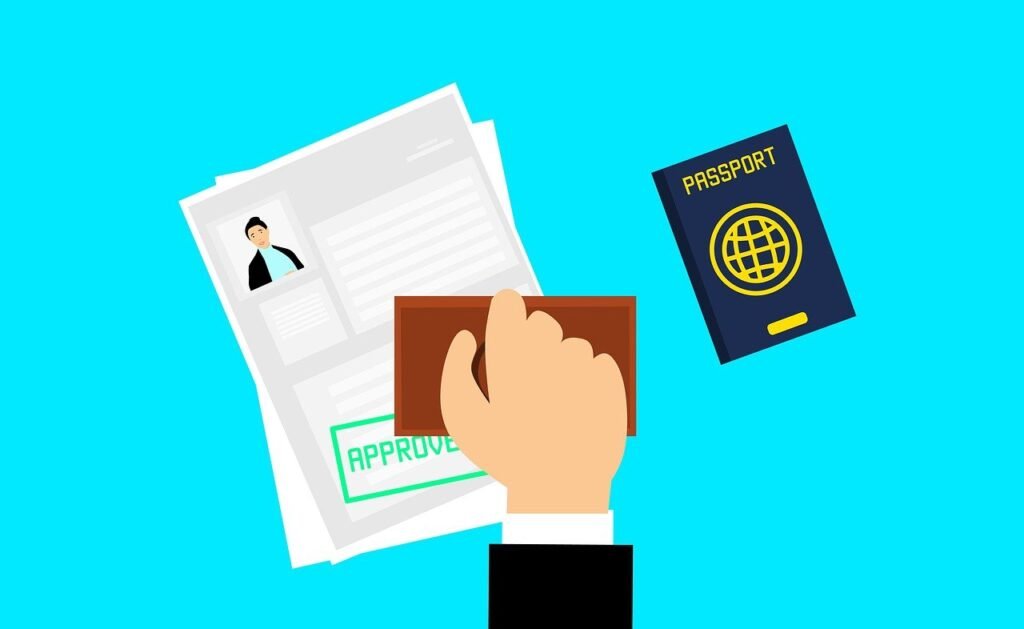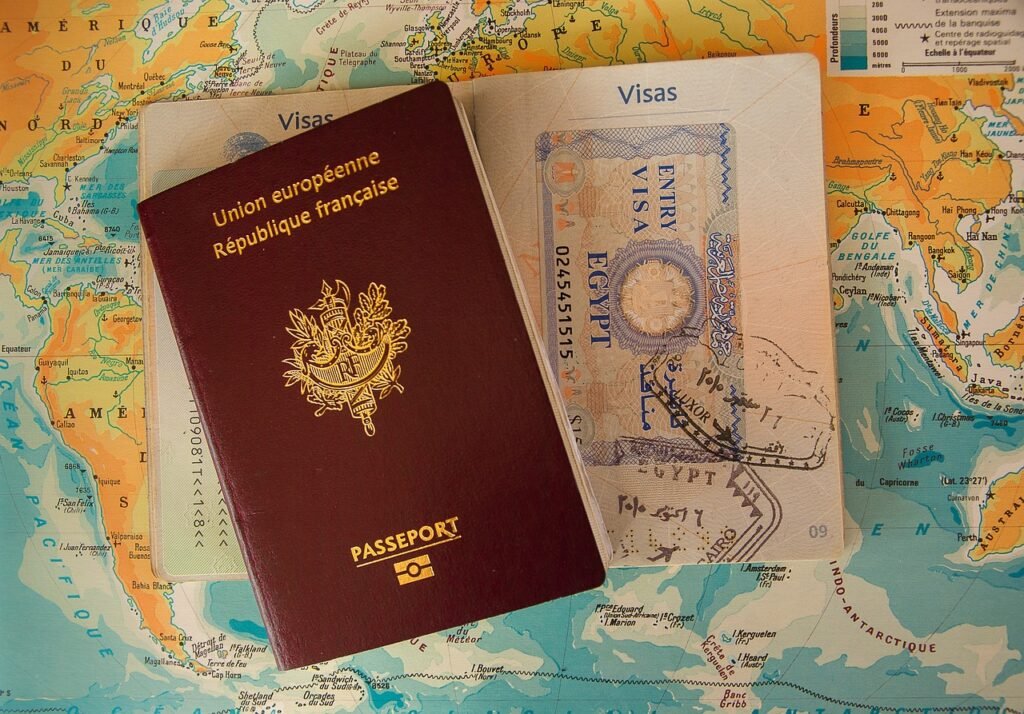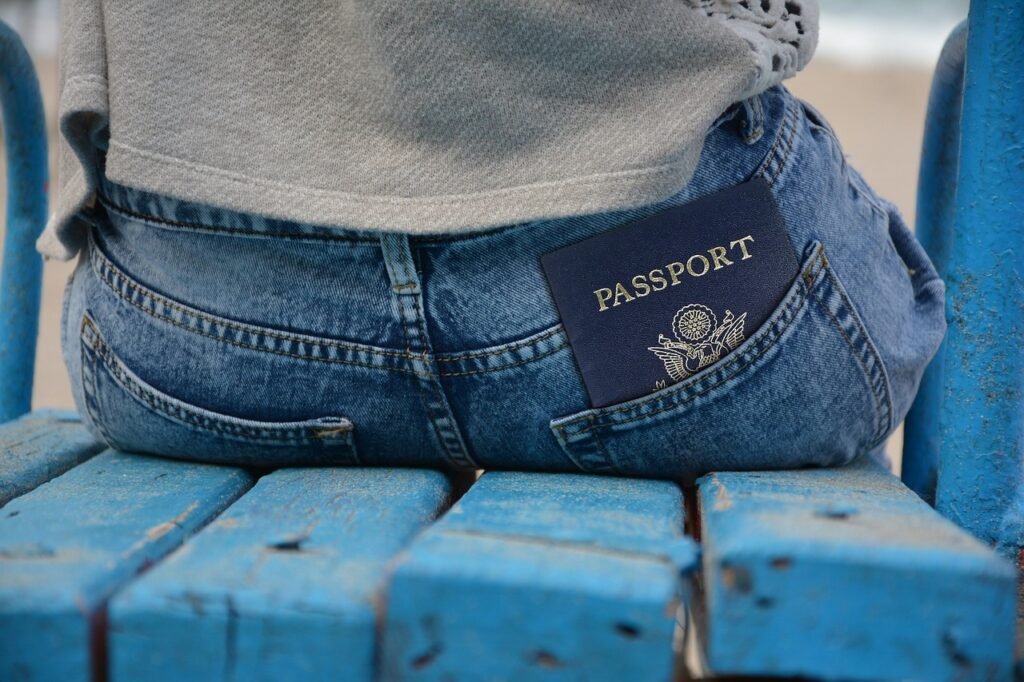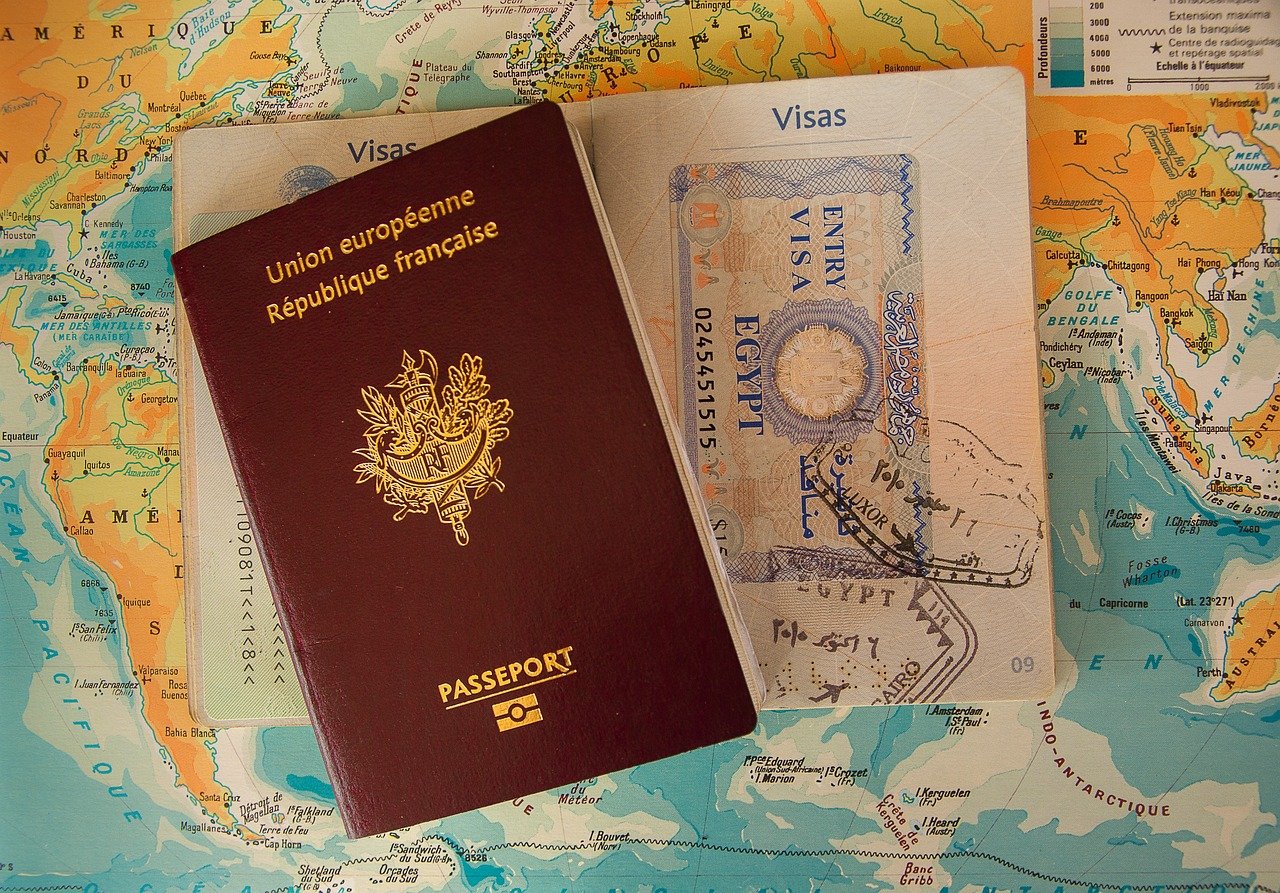Planning a trip abroad can be an exciting experience, but there are a few practical aspects to take care of before you can embark on your adventure. One crucial step is applying for a visa, which might seem daunting, especially if it’s your first time. You may be wondering how far in advance you should apply for a visa before your travel date. Well, fret not! In this article, we’ll provide you with all the essential information and useful tips on how to navigate the visa application process and ensure a smooth and hassle-free journey. So, grab a cup of tea, sit back, and let’s dive into the world of visa applications!
Preparing for Visa Application

Understanding the Purpose of Your Travel
Before applying for a visa, it is important to have a clear understanding of the purpose of your travel. Whether you are planning to visit a country for leisure, business, study, or any other reason, determining your travel purpose will help you choose the appropriate visa type and gather the necessary documents accordingly.
Researching Visa Requirements
Once you have identified the purpose of your travel, it is crucial to research the visa requirements of the country you plan to visit. Every country has its own set of visa regulations and requirements. Make sure to gather accurate and up-to-date information about the necessary documents, application process, visa fees, and any additional requirements such as health insurance or proof of vaccination.
Gathering Necessary Documents
After familiarizing yourself with the visa requirements, it’s time to gather all the necessary documents. The required documents may vary depending on the type of visa you are applying for and the purpose of your visit. Common documents include a valid passport, completed visa application form, passport-sized photographs, proof of travel such as flight tickets, proof of accommodation, proof of sufficient funds to cover your expenses, travel insurance, and any other supporting documents specific to your travel purpose.
Checking the Validity of Your Passport
Before applying for a visa, ensure that your passport is valid for the entire duration of your planned travel. Most countries require at least six months of passport validity beyond your intended departure date. If your passport is close to expiring or has less than the required validity, consider renewing it before applying for a visa to avoid any issues or delays in the application process.
Choosing the Right Visa Type
Determining the Purpose of Your Visit
To choose the right visa type, you need to determine the specific purpose of your visit. Whether it’s for tourism, business meetings, attending conferences, studying, or visiting family, different visa categories cater to different purposes. Understanding the purpose of your visit will help you navigate through the visa options available and select the one that matches your travel requirements.
Identifying Available Visa Categories
Visa categories can vary from country to country. Some countries may offer specific visas tailored for tourists, business travelers, students, or skilled workers, while others may have more general categories. Take the time to research and identify the available visa categories for your destination country. Read through the specific requirements and benefits of each category to ensure you apply for the most appropriate visa type.
Considering Long-Term or Multiple-Entry Options
If your travel plans involve multiple visits or an extended stay, it is worth considering long-term or multiple-entry visa options. These visas allow you to enter and exit the country multiple times within a specified period or stay for a longer duration than regular visas. If you anticipate returning to the country frequently or staying for an extended period, applying for a long-term or multiple-entry visa can save you time and effort in the long run.
Visa Application Process
Finding the Nearest Embassy or Consulate
To initiate the visa application process, you need to find the nearest embassy or consulate of the country you plan to visit. Most countries have diplomatic missions in major cities around the world. Visit the official website of the embassy or consulate to gather information about their services, application procedures, and contact details. Alternatively, you can also seek assistance from visa application centers, if available, for a smoother application process.
Scheduling an Appointment
Now that you know where to submit your visa application, it’s time to schedule an appointment. Many embassies and consulates operate on an appointment-only basis to manage the application flow effectively. Visit the embassy’s website or call their helpline to schedule an appointment at your convenience. Be prepared to provide all the necessary details, such as your name, passport number, travel dates, and purpose of visit, when scheduling the appointment.
Completing the Visa Application Form
A completed visa application form is a vital component of your visa application package. Most embassies and consulates provide downloadable application forms on their websites. Take your time to carefully fill out the application form, ensuring all the information provided is accurate and matches the details on your supporting documents. Double-check for any errors or omissions before submitting the form, as inaccuracies can result in delays or rejection of your visa application.
Preparing Supporting Documents
In addition to the visa application form, you will need to gather and prepare the supporting documents required for your visa application. These documents serve as evidence of your travel purpose, financial stability, and ties to your home country. Ensure that you have all the necessary documents, such as proof of travel, accommodation bookings, bank statements, employment letters, and any other specific documents as per the visa requirements. Make sure to organize the documents in the order specified by the embassy or consulate.
Paying the Visa Fee
Visa applications usually involve a non-refundable visa fee that must be paid at the time of submission. The visa fee can vary depending on the type of visa and the duration of your stay. Check the embassy or consulate’s website for the exact fee amount and accepted payment methods. Prepare the required amount in the appropriate currency, as some embassies or consulates may not accept credit card payments. Keep the payment receipt as proof of payment for future reference.
Required Documents for Visa Application
Valid Passport
A valid passport is a fundamental document required for visa application. Ensure that your passport has a minimum validity of six months beyond your intended departure date. Check for any damaged pages, as torn or heavily damaged passports may not be accepted. If your passport is close to expiring or lacks sufficient validity, consider renewing it before applying for a visa.

Visa Application Form
Every visa application requires a completed visa application form. Obtain the correct form from the embassy or consulate’s website or physical location. Fill it out accurately, ensuring all information matches your supporting documents. Some embassies may require online submission, while others may accept handwritten forms. Choose the appropriate method as per the instructions provided by the embassy or consulate.
Passport-Sized Photographs
Visa applications typically require recent passport-sized photographs. Follow the specific size and format guidelines provided by the embassy or consulate. Ensure that the photos capture your face clearly against a plain background, with no obstructions like hats or sunglasses. Have multiple copies of the photographs prepared, as they may be required for additional application stages or future travel requirements.
Proof of Travel
Proof of travel is necessary to validate the purpose and duration of your visit. It can include confirmed round-trip flight tickets, travel itineraries, or any other relevant travel documentation. Make sure the documents clearly show your name, travel dates, and destinations. Keep in mind that some embassies or consulates may require specific information, such as a return ticket or proof of accommodation for the entire duration of your stay.
Proof of Accommodation
To demonstrate that you have appropriate accommodations during your visit, provide proof of accommodation. This can be in the form of hotel bookings, rental agreements, or a letter of invitation from your host. Ensure that the proof of accommodation aligns with your travel dates and plans, and that it meets the embassy or consulate’s requirements. If staying with friends or family, submit a letter of invitation mentioning their contact details and your relationship with them.
Proof of Sufficient Funds
Most visa applications require evidence of sufficient funds to support yourself during your stay. This can be demonstrated through bank statements, sponsorship letters, or salary slips. The embassy or consulate wants to ensure that you have the financial means to cover your expenses without resorting to illegal or unauthorized work. Submit recent and accurate financial documents that clearly display your financial stability.
Travel Insurance
Travel insurance is often mandatory for visa applications. It provides coverage for medical emergencies, trip cancellations, and other unforeseen circumstances. Check the embassy or consulate’s requirements for travel insurance coverage, such as the minimum amount of coverage and the validity period. Purchase a suitable travel insurance plan that meets the specified criteria and includes the countries you plan to visit.
Invitation Letter (if applicable)
If you are visiting friends, family, or attending a specific event, you may need an invitation letter. This letter should be addressed to the embassy or consulate and outline the purpose of your visit, the host’s details, and any financial responsibility they bear. Ensure that the invitation letter is signed and dated by your host. Remember that the letter should be genuine and accurately reflect the purpose of your visit.
Proof of Employment or Study
For those traveling for employment or study purposes, proof of employment or study is essential. Submit documents such as employment letters, pay stubs, or enrollment letters from educational institutions. These documents should clearly state your position, salary, duration of employment, or dates of study. Proof of employment or study helps establish your ties to your home country and demonstrates that you have a legitimate reason to return.
Other Supporting Documents
Depending on your travel purpose and the specific requirements of the embassy or consulate, additional supporting documents may be necessary. These can include property ownership documents, marriage certificates, birth certificates, or any other documents that strengthen your application and support your travel purpose. Review the embassy or consulate’s website for any additional requirements and prepare the relevant documents accordingly.
Submitting Your Application
Double-Checking the Completed Application
Before submitting your visa application, take the time to double-check all the information provided on the application form and supporting documents. Review for any inaccuracies, missing details, or inconsistencies. It is crucial to ensure that all information is correct and matches the supporting documents, as any discrepancies may lead to delays or even rejection of your application.
Assembling the Application Package
Assemble your visa application package in the order specified by the embassy or consulate. Place the completed visa application form on top, followed by all the supporting documents in the required sequence. Organize the package neatly and securely to prevent any damage or loss of documents during transit. Consider using a folder or envelope specifically designated for your visa application.
Making Copies of All Documents
Before submitting your application, it is advisable to make copies of all the documents in your application package. These copies serve as a backup in case any original documents are misplaced or lost during the processing. Additionally, keeping copies of your application is helpful for future reference or in case you need to reapply or extend your visa in the future. Store the copies separately from the originals in a safe place.
Submitting the Application in Person or by Mail
Depending on the embassy or consulate’s instructions, you can either submit your visa application in person or by mail. For in-person submissions, schedule an appointment and bring your application package along with any required fees. If mailing your application, ensure that it is sent using a reliable and trackable courier service. Follow the embassy or consulate’s guidelines for mailing addresses and any additional requirements, such as return envelopes or pre-paid shipping labels.
Scheduling a Visa Interview

Understanding the Interview Requirement
Some visa applications require an in-person interview as part of the application process. The purpose of the interview is to verify the information provided in the application and assess the credibility of the applicant. The embassy or consulate will inform you if an interview is mandatory for your visa type. Understanding this requirement prepares you for the next steps and ensures you allocate sufficient time for the interview process.
Booking an Interview Appointment
If an interview is required, you must book an interview appointment with the embassy or consulate. Follow the provided instructions or visit their website to schedule the appointment. Ensure that you choose a date and time that is convenient for you and allows adequate preparation. Have your visa application package, supporting documents, and payment receipts readily available during the interview.
Preparing for the Interview
Preparing for the visa interview is essential to showcase your genuine travel intentions and eligibility for the visa. Review your visa application and supporting documents thoroughly to familiarize yourself with the details. Practice answering potential interview questions, especially those related to the purpose of your visit, your ties to your home country, and your financial stability. Dress appropriately for the interview, present yourself professionally, and arrive on time or slightly early to make a positive impression.
Attending the Visa Interview
Arriving Early
Arrive at the embassy or consulate well ahead of your scheduled interview time. This allows you to go through any security procedures, find the designated interview area, and collect your thoughts before the interview. Arriving early also demonstrates your punctuality and commitment to the application process, leaving a positive impression on the consular officer conducting the interview.
Dressing Appropriately
Dressing appropriately for the visa interview is crucial to make a favorable impression. Choose professional attire that reflects your seriousness and respect for the process. Dressing neatly and conservatively shows that you take the interview seriously and understand the importance of the visa application. Avoid wearing casual or revealing clothing that may be deemed inappropriate for a formal interview.
Bringing Necessary Documents
Bring the original and any additional copies of your visa application package and supporting documents to the interview. The consular officer may want to verify specific documents or ask questions related to them. Having all the necessary documents readily available showcases your preparedness and allows for a smoother interview process. Organize the documents beforehand, making them easily accessible when requested.
Answering Interview Questions
During the visa interview, be attentive, polite, and concise when answering the consular officer’s questions. Respond truthfully, providing clear and honest explanations. Be prepared to elaborate on your travel plans, the purpose of your visit, and any other queries related to your application. Maintain a positive demeanor and avoid providing excessive or unnecessary information. Remember, the objective is to demonstrate that you meet the visa requirements and have genuine travel intent.
Processing Time and Status Check
Knowing the Average Processing Time
The processing time for visa applications varies from country to country and can depend on multiple factors such as visa type, application volume, and individual circumstances. Research and familiarize yourself with the average processing time for the visa you are applying for. It is advisable to submit your visa application well in advance, considering the estimated processing time to avoid any last-minute delays or inconveniences.
Checking the Status of Your Application
Many embassies and consulates offer online systems or helplines to check the status of your visa application. After submitting your application, monitor its progress regularly. Use the tracking reference numbers or unique identifiers provided during the application process to access the status update system. Being proactive and aware of the progress gives you peace of mind and allows you to stay prepared for any additional requirements or follow-ups.
Contacting the Embassy or Consulate
If you have any concerns or questions about your visa application during the processing period, it is advisable to contact the embassy or consulate directly. They can provide accurate and up-to-date information regarding the status of your application, any additional requirements, or any issues that may arise. Ensure that you have your application reference number or other relevant details ready when contacting them for efficient assistance.
Collecting Your Passport and Visa
Receiving Notification for Passport Collection
Once your visa application is processed, you will receive a notification from the embassy or consulate regarding the collection of your passport. This notification can be in the form of an email, SMS, or physical letter. Read the notification carefully for the designated collection date, time, and location. Follow any specific instructions provided to ensure a smooth and hassle-free collection process.
Submitting Your Receipt and Collecting the Passport
On the day of passport collection, bring the original receipt or any other proof of application submission. This receipt is essential for verifying your identity and connecting you to the correct visa application. Visit the embassy or consulate during the designated collection hours, ensuring you have all the necessary identification documents required. Follow any security or administrative procedures for passport collection.
Verifying the Accuracy of Visa Details
Upon receiving your passport, take a few moments to verify the accuracy of the visa details. Check that your personal information, such as name and passport number, is correct. Ensure that the visa type, validity dates, and any specific conditions are accurately recorded. If you notice any discrepancies or errors, immediately inform the embassy or consulate to rectify the issue. It is crucial to have an accurate visa to avoid any complications during your travel.
Applying for Visa Extensions or Changes
Understanding Visa Extension/Change Rules
If your travel plans change, or you need to extend your stay in the country, familiarize yourself with the visa extension or change rules specific to the country you are visiting. Each country has its own regulations and procedures for extending or changing visa status. Research the visa extension or change requirements, restrictions, application deadlines, and any accompanying documentation or fees.
Gathering Required Documents
To apply for a visa extension or change, gather the necessary documents as specified by the host country’s immigration authority. These documents may include an application form, a valid passport, proof of financial sustainability, updated accommodation details, and any other supporting documents specified for the visa extension or change process. Ensure that all documents are accurate, up-to-date, and organized in the required order.
Submitting the Application
Follow the visa extension or change application procedures provided by the host country’s immigration authority. Submit the completed application form and all required documents within the specified timeline. Pay any applicable fees as per the regulations. Keep a copy of the application and any supporting documents for your records. Early submission is recommended to allow ample time for processing and to avoid any overstay penalties.
Attending Additional Interviews (if applicable)
Depending on the visa extension or change process, additional interviews or appointments may be required. Be prepared to attend any interviews scheduled by the immigration authority. Study the specific requirements or questions related to your visa extension or change and be ready to provide additional documentation or explanations if requested. Promptly attend all scheduled appointments to expedite the process.
Applying for a visa can seem like a complex process, but with proper planning and preparation, it can be a smooth journey towards fulfilling your travel dreams. By understanding the purpose of your travel, researching visa requirements, and gathering the necessary documents, you lay the foundation for a successful visa application. Following the correct visa application process, attending the visa interview with confidence, and staying informed about the processing time and status check ensure a stress-free experience. Finally, with careful verification of passport and visa details, timely collection of your passport, and knowledge of visa extension or change rules, you can navigate through any upcoming travel changes. Remember to approach the visa application process with patience, attention to detail, and a friendly attitude, and you’ll be well on your way to embarking on your exciting adventure.
